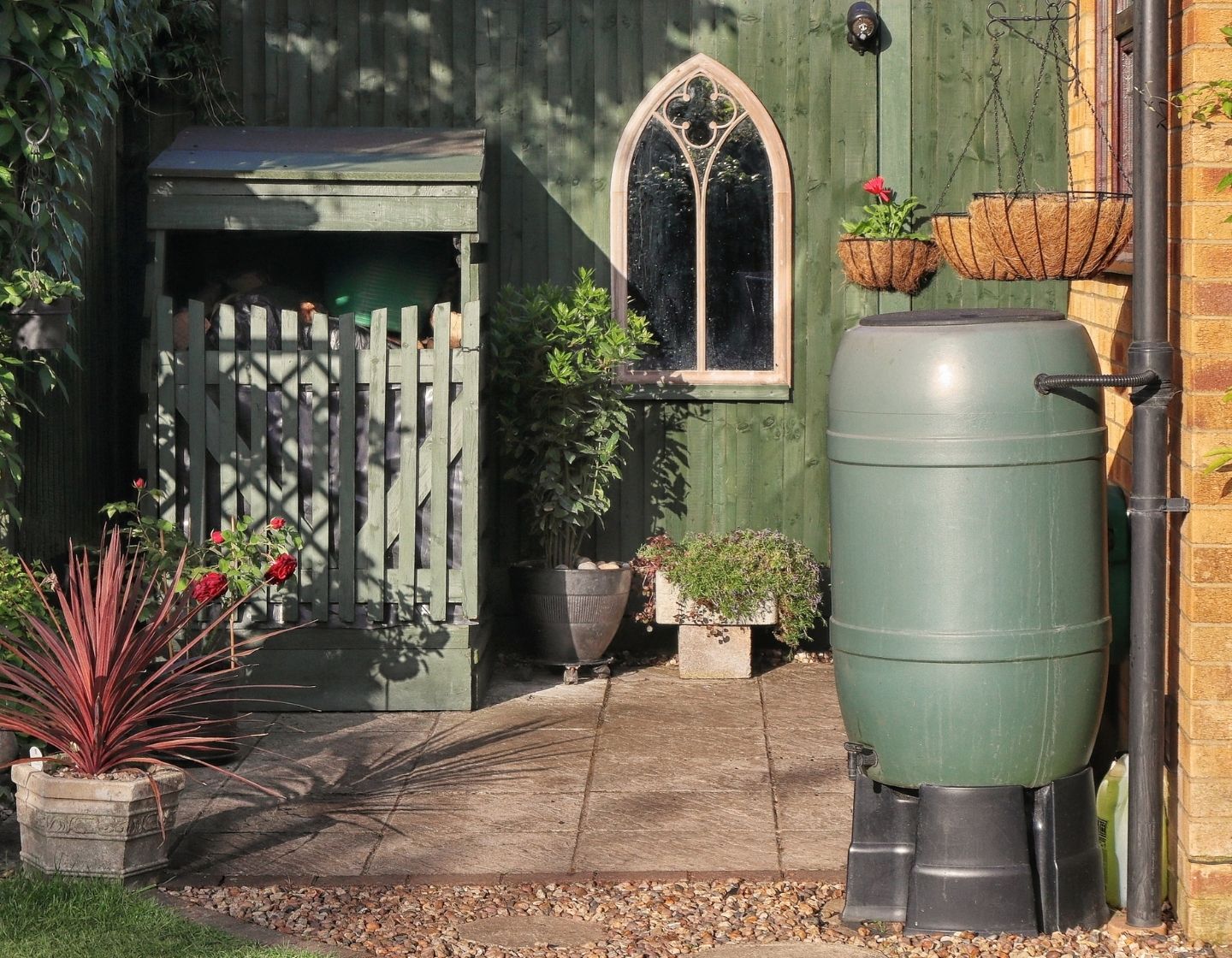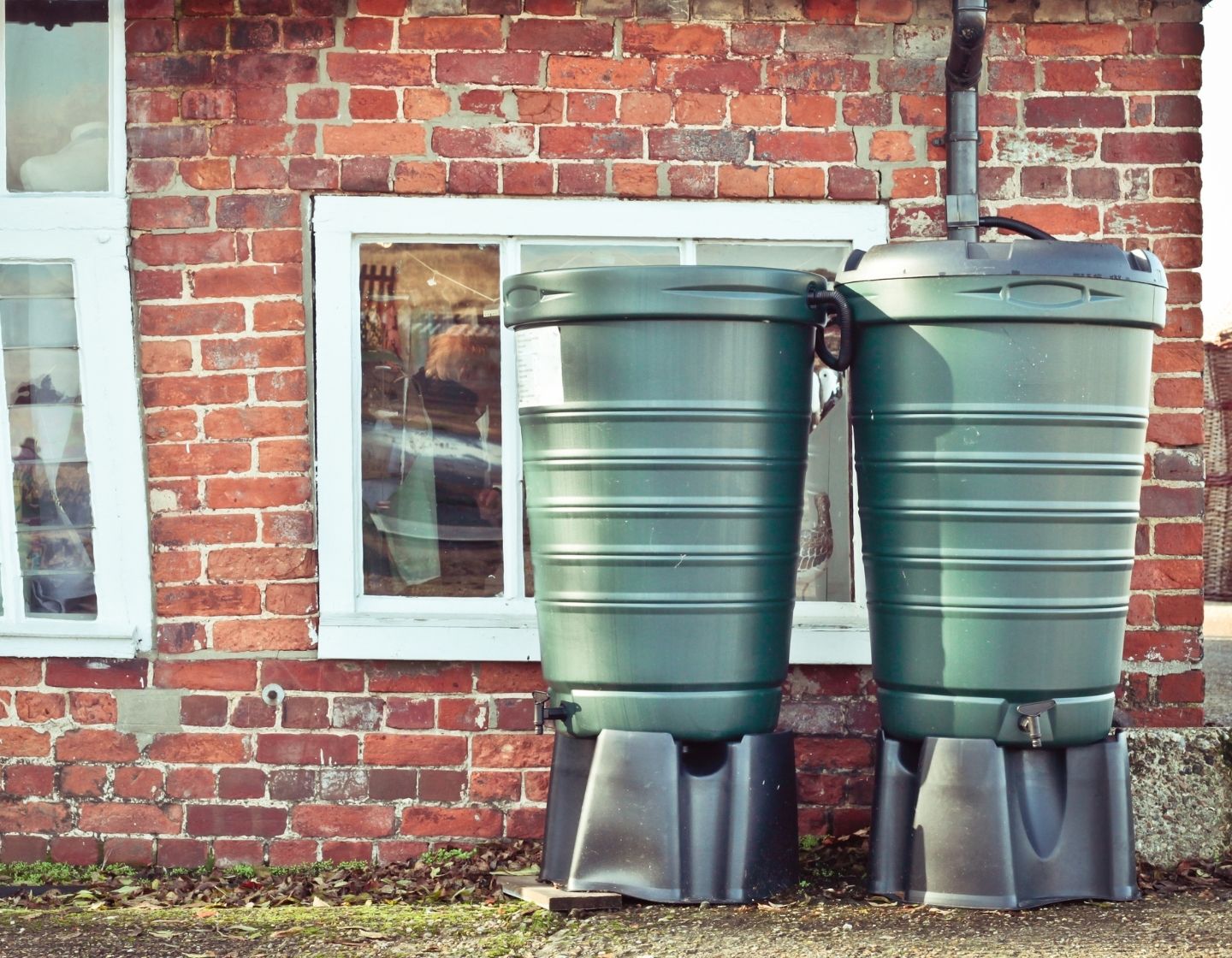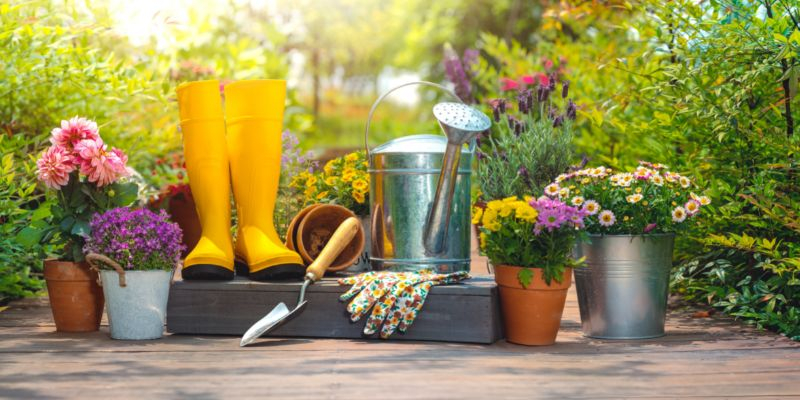Should I get a water butt?
What is a water butt?
A water butt is essentially a big outside storage unit that catches rainwater. It has many benefits because rainwater is great for plants and it’s an effective way to save on the water bills and reduce water waste and your carbon footprint. England is renowned for it’s weather so find a silver lining and start putting it to use, for free!
How does a water butt work?
Usually, rainwater falls onto your roof and collects in the guttering which then flows through the downpipes into the drain. With a water butt, the rainwater falls from the roof into the guttering in the same way, but rather than flowing through the downpipes and down the drain, a diverter is inserted to collect it all in the butt. Once it has reached maximum capacity, the rest of the water will simply divert to the drain. Water butts fit in any size garden, as long as you have access to a downpipe.
According to the Royal Horticultural Society (RHS), a leading gardening charity, climate change and population growth has put immense pressure on our water resources so saving rainwater relieves the stress put on our rivers and underground reserves that feed our usual water supply.

How to install a water butt?
Your water butt should come with its own set of instructions but they all roughly follow these steps:
- Place the water butt beside your chosen downpipe (the ones connected to your guttering).This can be from your house, garage or shed as long as it has guttering: even your shed roof bcould harvest 640 litres of water a year. If you have more than one downpipe, choose the one that gets the most amount of rain.
- Ensure the butt is on a flat stand, high enough that you can fit your watering can underneath and strong enough to hold the water.
- Using a spirit level, you should mark the water butt’s height on the pipe with a marker.
- Measure 3cm below the mark and cut through the downpipe with a hacksaw.
- Attach the rainwater diverter to the pipe; the cut off section of the downpipe fits onto the bottom of the diverter.
- Measure eight 8cm down from the top of the water butt before drilling a hole.
- Install the connector by fitting it in the hole and screwing it in place.
- Then attach the connector to the diverter before closing the lid.
How to keep a water butt clean?
Water butts can become green with algae and even suffer with phytophthora root rot so it is recommended that you clean it annually. To give it a thorough clean, follow these instructions:
- Drain out any water.
- Scrub the inside of the butt with a coarse brush or a special water butt disinfectant. If you’re having troubles reaching any deep areas, the RHS suggests tying the brush to a stick.
- Rinse with clean water.
- You can add water additives that filter and purify the water to enhance the quality, but it isn’t necessary.
You can also purchase accessories like a gutter filter to prevent debris and leaves falling into the water butt from the pipe, or you could even use an old pair of tights. Additionally, keeping the lid closed at all times prevents any algae growing from the sunlight.

Will a water butt help me save money?
Rainwater is free, so yes! Outdoor water accounts for around 7% of our total water use but on a warm Summers day this can rise to 50%. A water butt means you don’t have to rely on your main water supply, which could save you about 30,000 million liters of water every summer, enough to fill an entire reservoir. If you’re on a water meter, this could especially make a huge difference. If every household in England collected one water butt’s worth of water a year (160 liters), we would save four billion liters of water nationwide a year. Rather than literally throwing that money down the drain, you could put it to good use.
The Water Services Regulation Authority say that it costs roughly £1.50 per hour to water a garden with a hose or sprinkler. Over the summer, those pounds can quickly add up. Although the cost will depend on your water plan, it’s still an unnecessary cost. We found that covid-19 has caused our water use to soar, and with summer soon approaching, a water butt could help you save those extra pennies.
Additionally, water butts are super helpful in times of drought, dry weather or hosepipe bans. We tend to think of water as a given, rather than a privilege. It runs through our taps and we rarely give it a second thought. But water is a luxury. Each UK household has half a tonne of water delivered to their taps every day but by choosing a water butt you’re reducing the need for water pumping and treatment, thus saving precious energy and resources.
An added bonus is that plants and vegetables love rainwater. It’s soft, chemical free and entirely natural compared to tap water, so not only are you doing yourself a service, but your garden will flourish too.
It’s a no brainer really! For more money-saving tips and exclusive products and offers, join our Save Money Cut Carbon Home Club. Alternatively, check out our water-saving range to find more ways to create an eco-friendly home.


